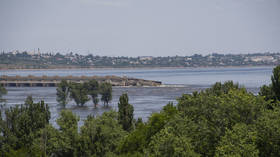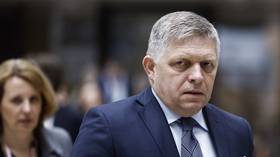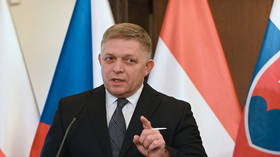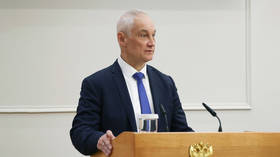Russia could restore giant dam destroyed by Ukraine – governor
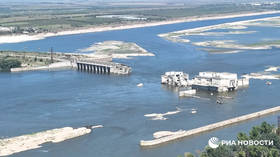
The Kakhovka Dam, destroyed amid the Ukraine conflict, could be rebuilt using modern technologies and with the help of blueprints preserved in the state archives, the governor of Russia’s Kherson Region, Vladimir Saldo, said in an interview with RIA Novosti published on Monday.
The dam, which served as a hydroelectric power station, was destroyed back in June after coming under repeated missile attacks. The collapse of the structure resulted in flooding along both banks of the Dnieper River and led to multiple deaths. Neither Kiev nor Moscow have admitted responsibility for destroying the dam and have blamed each other for the incident.
Saldo, however, insists that it was the Ukrainian army that was behind the attack, suggesting that Kiev had ordered its troops to destroy the power station because it served as a transport hub. He pointed out that the Kakhovka Dam was constantly shelled because road, railway, and land routes passed through its structures. It also had a sluice facility that allowed ships to pass from the Kakhovka reservoir to the lower part of the Dnieper River.
“The Ukrainian armed forces had a specific task: To bring it to such a state that it would cease to serve as a road and railway transport hub and destroy it,” Saldo said, noting that the dam was hit over a long period using US-supplied HIMARS missiles. He said these munitions targeted one point of the structure until it reached a critical state and collapsed.
The governor called the destruction of the dam by Ukrainian forces “the greatest crime” because it had disrupted the region’s ecological balance.
Since the incident, both Moscow and Kiev have insisted that the Kakhovka Dam cannot be repaired. However, Saldo has claimed that the facility could be rebuilt using blueprints still preserved in the archives.
The governor suggested that the blueprints could be used as the starting point for a new project based on modern methods and technologies. Saldo added that these restoration efforts could be completed relatively quickly, given that it took three years to build the original dam in the 1950s.
New technologies would make the dam “even more beautiful, attractive, and useful,” Saldo said.
The ecological damage caused by the destruction of the Kakhovka Dam and hydroelectric power plant has been estimated at over 400 billion rubles ($4.4 billion), Russian Deputy Prime Minister Victoria Abramchenko reported in October. She noted that her assessment did not include damage to the affected settlements and other attendant economic facilities.
